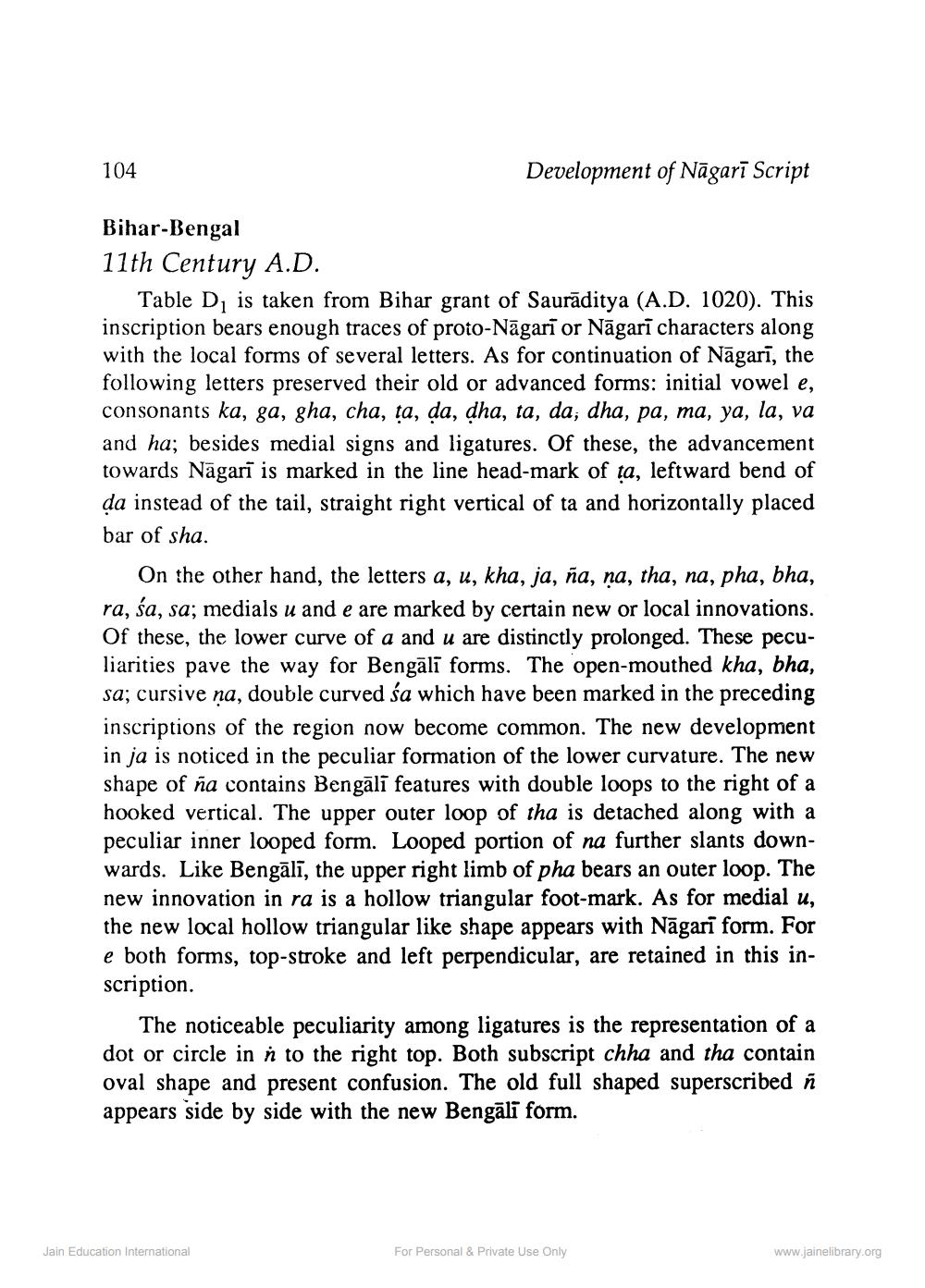________________
104
Development of Nāgarī Script
Bihar-Bengal 11th Century A.D.
Table D, is taken from Bihar grant of Saurāditya (A.D. 1020). This inscription bears enough traces of proto-Nāgarī or Nāgarī characters along with the local forms of several letters. As for continuation of Nāgarī, the following letters preserved their old or advanced forms: initial vowel e, consonants ka, ga, gha, cha, ta, da, dha, ta, da; dha, pa, ma, ya, la, va and ha; besides medial signs and ligatures. Of these, the advancement towards Nāgarī is marked in the line head-mark of ta, leftward bend of da instead of the tail, straight right vertical of ta and horizontally placed bar of sha.
On the other hand, the letters a, u, kha, ja, ña, na, tha, na, pha, bha, ra, śa, sa; medials u and e are marked by certain new or local innovations. Of these, the lower curve of a and u are distinctly prolonged. These peculiarities pave the way for Bengālī forms. The open-mouthed kha, bha, sa; cursive na, double curved śa which have been marked in the preceding inscriptions of the region now become common. The new development in ja is noticed in the peculiar formation of the lower curvature. The new shape of ña contains Bengālī features with double loops to the right of a hooked vertical. The upper outer loop of tha is detached along with a peculiar inner looped form. Looped portion of na further slants downwards. Like Bengālī, the upper right limb of pha bears an outer loop. The new innovation in ra is a hollow triangular foot-mark. As for medial u, the new local hollow triangular like shape appears with Nāgarī form. For e both forms, top-stroke and left perpendicular, are retained in this inscription.
The noticeable peculiarity among ligatures is the representation of a dot or circle in n to the right top. Both subscript chha and tha contain oval shape and present confusion. The old full shaped superscribed ñ appears side by side with the new Bengāli form.
Jain Education International
For Personal & Private Use Only
www.jainelibrary.org




